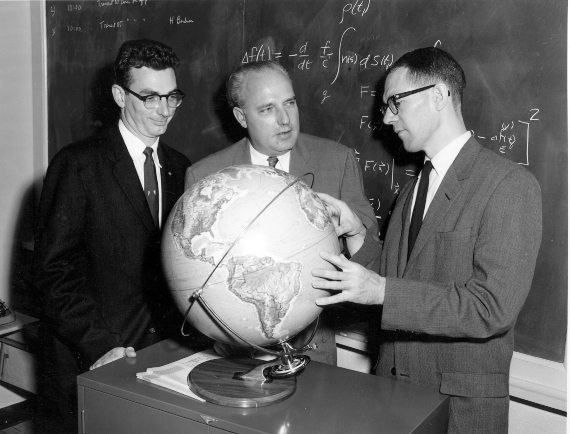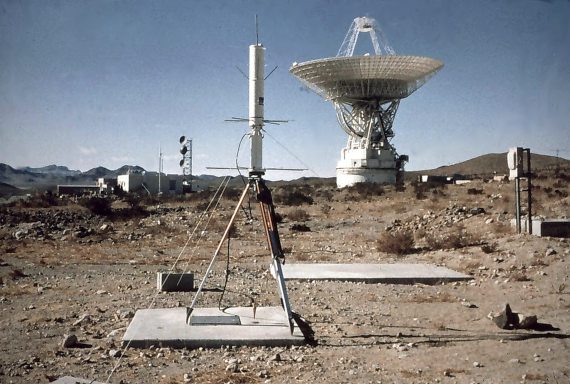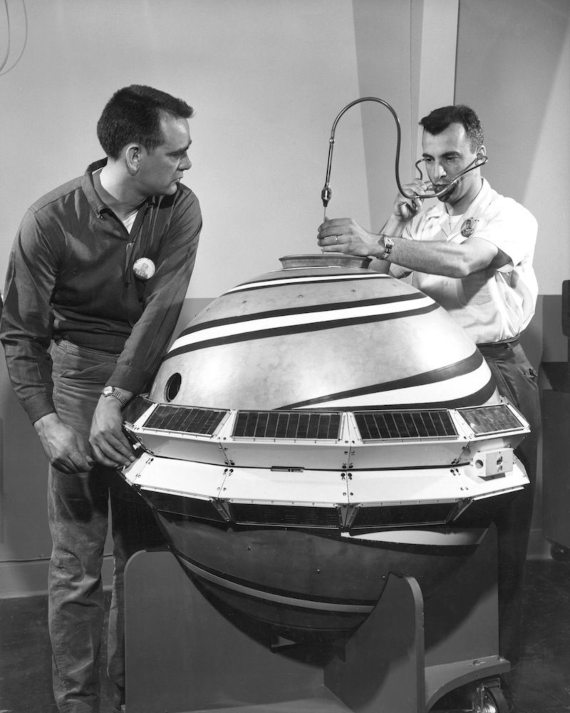The history of satellite navigation began on the same day as the space race: October 4, 1957, when the Soviet Union placed the first human object in orbit, Sputnik 1. The news shocked the world and was a slap in the face for a United States presided over by General Dwight D. Eisenhower, a key figure in the Second World War, who still hoped to win this new battle.
The National Academy of Sciences had organised an week-long international conference on rockets and satellites in Washington starting September 30, 1957, in which American and Soviet scientists gave details of the progress of their satellite projects. In both cases they confirmed that their satellites would contain radio transmitters and that the signals broadcast back to Earth would be the way to follow the orbit of the device and confirm the success of the mission. The newspapers explained how the frequency of these radio signals would be altered as the satellite passed over a receiving station on the ground, and that this small alteration would serve to calculate how far away the space object was at that moment.
During that week’s presentations, both American and Soviet scientists expressed their confidence in being able to launch their satellites within a matter of months. But what nobody expected was that news of the launch of Sputnik 1 would come from Moscow that same Friday, October 4, coinciding with the closing dinner of the conference. The teletype from the Soviet TASS agency that made the announcement detailed that the first artificial satellite in history was emitting signals with a frequency of 20 megahertz —easy for any radio amateur to pick up— in a clever move so that citizens around the world could record the passage of Sputnik above their heads.

Beep-beep: the heartbeat of the space race
Amateur radio operators were able to pick up Sputnik‘s beep-beep signal that same weekend, even before US monitoring stations, which used a different frequency and had to be recalibrated. The following Monday (October 7, 1957), there was a great deal of commotion in the research centres: “The Monday after the launch of Sputnik I, we met in the cafeteria for lunch. Many were buzzing with the appearance of Sputnik and its implications for the Cold War and the International Geophysical Year,” explained William Guier and George Weiffenbach, who were then working at the Applied Physics Laboratory (APL) at Johns Hopkins University. George had his own 20 megahertz radio receiver and that same afternoon they rolled up their sleeves and managed to record the satellite signals.
In a matter of hours they realised that they could go much further. Like many of their colleagues, they followed Sputnik‘s every pass and calculated how far away it was from them, using the slight variation in frequency caused by the so-called Doppler effect, the same one that alters the sound of a train whistle as it passes a station. But they didn’t stop at that simple calculation. Guier and Weiffenbach concentrated on analysing the data of the “Doppler shift” at their location, with the ambitious goal of being able to deduce the entire trajectory of its orbit. This would enable them to predict the exact position of the Soviet satellite at any given time.

They came up with a set of nine equations with nine unknowns to be able to determine the six parameters required for a satellite orbit. And to solve these equations they needed all their mathematical vector analysis skills and also the computing power of UNIVAC (one of the first digital computers), which the head of the APL laboratory gave them for their promising research.
Guier and Weiffenbach’s method for spying on Soviet satellites was ready in a few weeks, in time to be applied to the last signals transmitted by Sputnik 1 before its batteries ran out after 22 days. The story could have ended there, with that success, but months later, APL’s scientific director, Frank McClure, recruited them for another more crucial task: to solve the reverse problem. On March 17, 1958, McClure called the two researchers into his office for a confidential talk, in which he proposed to use the Doppler effect not to determine the orbit of a satellite from a given location… but to determine an unknown location, where the signal is received from a satellite whose trajectory is known precisely.
Recruited for military research
Within a couple of days, William Guier and George Weiffenbach returned with a preliminary outline of this revolutionary new navigation technology, although the two scientists later acknowledged that “we did not fully realize the potential of what we were doing.” What Frank McClure did not share with them at the time was the goal they were working toward: to devise a navigation system to enable the precise launch of Polaris nuclear missiles from US Navy submarines. With this military objective in mind, so typical of the Cold War, the APL laboratory quickly developed TRANSIT, the first satellite navigation system, which passed the tests in 1960 and came into operation in 1964, with a constellation of five satellites.

This was the germ of GPS, a much more sophisticated system that inherited the basic idea of TRANSIT and merged it with other pioneering systems and technologies, such as Project 621B or the Timation satellites, which put an atomic clock into orbit for the first time. The US Department of Defense started the GPS project in 1973 and its full constellation of 24 satellites became operational in 1993, first for military use and three years later for civilian use as well. Since then, the impact of geolocation on our lives and on scientific research has made the team that developed GPS into heroes of space engineering and technology. However, the success of satellite navigation would not have been possible without the earlier audacity of William Guier, George Weiffenbach and Frank McClure, who on the day the space race began set off down the road toward this unexpected application.
Comments on this publication